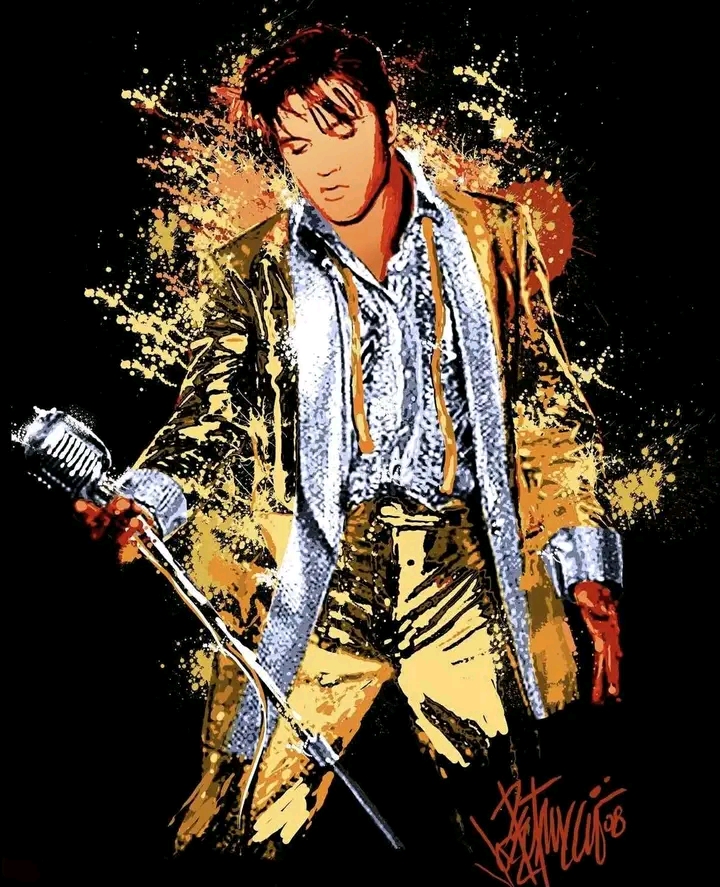
Elvis Presley is remembered around the world as the King of Rock ’n’ Roll, a musical giant whose voice, presence, and charisma reshaped popular culture. But beyond the electrifying performances and legendary recordings, Elvis had another side—quieter, more intimate, and rarely spotlighted: his love for art. “Elvis Presley’s Art Work; The Origin” invites us into this lesser-known realm, where creativity flowed not through microphones and stages, but through sketches, colors, and private moments of expression.
From childhood, Elvis displayed a curiosity for drawing and visual art. Growing up in Tupelo, Mississippi, he often sketched simple images—cars, guitars, and figures inspired by comic books and the southern culture surrounding him. These early drawings were not meant for fame or public acclaim; they were personal attempts to bring imagination into form. Like many children with limited resources, Elvis used whatever he could find: notebook edges, scraps of paper, and school assignments became canvases for a young boy with a restless creative spirit.
As he grew older, music became the dominant force in his life, but art never entirely faded. During his teen years in Memphis, Elvis would sometimes sketch outfits, hairstyles, and dreamlike scenes. His fascination with style—later seen in his iconic stage costumes—had its roots in those early doodles. Even then, he seemed to be shaping the visual identity that would one day influence fashion, stage design, and pop aesthetics across the world.
When fame exploded in the mid-1950s, Elvis found far less time for private pursuits, yet he continued to appreciate art deeply. He collected paintings, sculptures, and decorative pieces that resonated with him emotionally. Graceland became a sanctuary where his passion for visual beauty thrived. Friends often recalled moments when Elvis admired a painting not for its monetary value, but for the feeling it stirred—proof that he connected with art on a personal, intuitive level.
In rare quiet hours, Elvis occasionally returned to sketching. Some surviving pieces reveal a thoughtful, reflective side: pencil drawings, stylized figures, and abstract patterns that suggest both sensitivity and introspection. These sketches weren’t the work of a trained artist, but they were sincere expressions of a man who lived under constant public attention yet sought private ways to release emotion and imagination.
The origins of Elvis Presley’s artwork lie not in formal training or professional ambition, but in the simple, human need to create. Before fame, before the global hysteria, Elvis was a boy who loved to draw. And even after the world claimed him as an icon, there remained within him a quiet artist who found comfort in color, lines, and shapes. His artwork—however modest—reminds us that creativity was woven into every part of his life.
In exploring this lesser-known chapter of Elvis’s legacy, we uncover a more complete picture: not only the King of Rock ’n’ Roll, but a man with a tender appreciation for beauty and a lifelong inclination to express himself beyond music. “Elvis Presley’s Art Work; The Origin” is, at its heart, a story about the soul behind the legend—a soul that created far more than the world ever saw.


